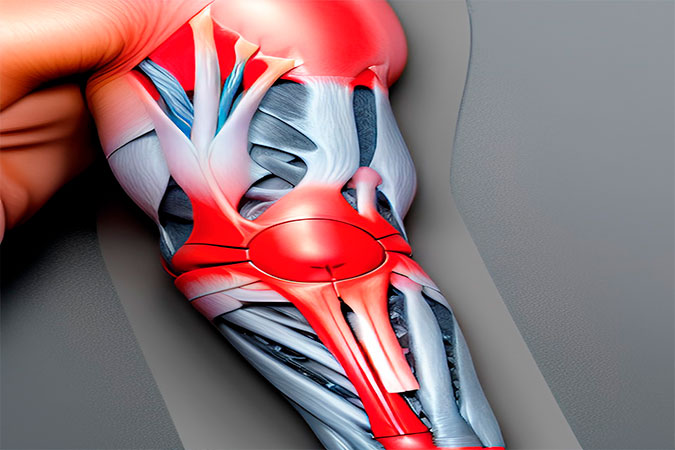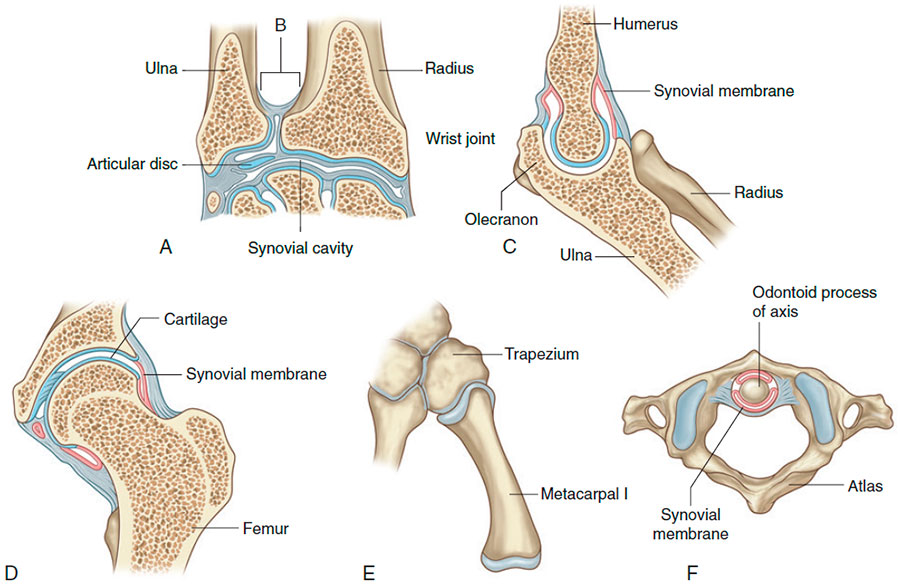Specific Types of Synovial Joints: Structure, Function, and Clinical Relevance
This expert article provides an in-depth exploration of the specific types of synovial joints, namely, plane, hinge, pivot, bicondylar, condylar (ellipsoid), saddle, and ball and socket joints. Each type is discussed concerning its structure, function, and an example of where it can be found in the human body. The article sheds light on the intricacy of human movements, the pivotal role of synovial joints, and their relevance to health areas such as injury management, orthopedic surgery, and rehabilitation.

Specific Types of Synovial Joints
The human body is an intricate system where movement is made possible by the interaction of bones, muscles, and joints. Among the diverse types of joints, synovial joints play a crucial role in providing the maximum range of motion. Named for the synovial fluid found within them, these joints are unique, complex, and can be classified into seven categories based on the shape of their articulating surfaces and the type of movement they facilitate: plane, hinge, pivot, bicondylar, condylar (or ellipsoid), saddle, and ball and socket joints. This article offers an in-depth exploration of each type.

Plane Joints
Plane joints, also known as gliding joints, allow sliding or gliding movements, where one bone moves across the surface of another. They consist of flat or slightly curved articular surfaces, allowing bones to glide past one another in any direction along the plane of the joint. For instance, the acromioclavicular joint, where the clavicle meets the highest point of the shoulder blade (acromion), is a plane joint.
Hinge Joints
Hinge joints, as the name suggests, operate much like the hinge on a door. These joints permit movement primarily in one plane, allowing flexion (decreasing the angle between the bones) and extension (increasing the angle). An excellent example of a hinge joint is the elbow joint (the humero-ulnar joint), which allows us to flex and extend our forearm relative to our upper arm.
Pivot Joints
Pivot joints are designed to allow rotation around a single axis. These joints consist of a rounded bone that fits into a ring formed by a second bone and adjoining ligament. The atlanto-axial joint, located between the first two vertebrae (the atlas and axis), is a pivot joint that allows the head to turn from side to side.
Bicondylar Joints
Bicondylar joints are special joints that allow movement primarily in one axis but also limited rotation around a second axis. This type of joint is formed by two convex condyles that articulate with concave or flat surfaces. The knee joint, one of the largest and most complex joints in the body, is an example of a bicondylar joint.
Condylar (Ellipsoid) Joints
Condylar joints, also known as ellipsoid joints, allow movement around two axes that are at right angles to each other. This feature enables these joints to facilitate flexion, extension, abduction (movement away from the midline), adduction (movement towards the midline), and limited circumduction (circular motion). An instance of a condylar joint is the wrist joint.
Saddle Joints
Saddle joints have a unique shape that allows movement around two axes, much like condylar joints. However, the articulating surfaces in these joints are concave in one direction and convex in the other, resembling a saddle. They permit flexion, extension, abduction, adduction, and circumduction. The carpometacarpal joint of the thumb, responsible for the remarkable opposability of the human thumb, is a saddle joint.
Ball and Socket Joints
Ball and socket joints are the most mobile type of joint in the human body, allowing movement in multiple axes. These joints consist of a spherical ball-like bone that fits into a concave socket, enabling flexion, extension, abduction, adduction, circumduction, and rotation. The hip joint, which attaches the leg to the torso, is a classic example of a ball and socket joint.
Conclusion
Synovial joints play an integral role in our everyday activities, from the simplest actions such as walking and writing, to the complex movements seen in sports and dance. Understanding their specific types and functions not only elucidates the intricate mechanisms behind human movement but also provides crucial insights relevant to injury management, orthopedic surgery, and rehabilitation.











